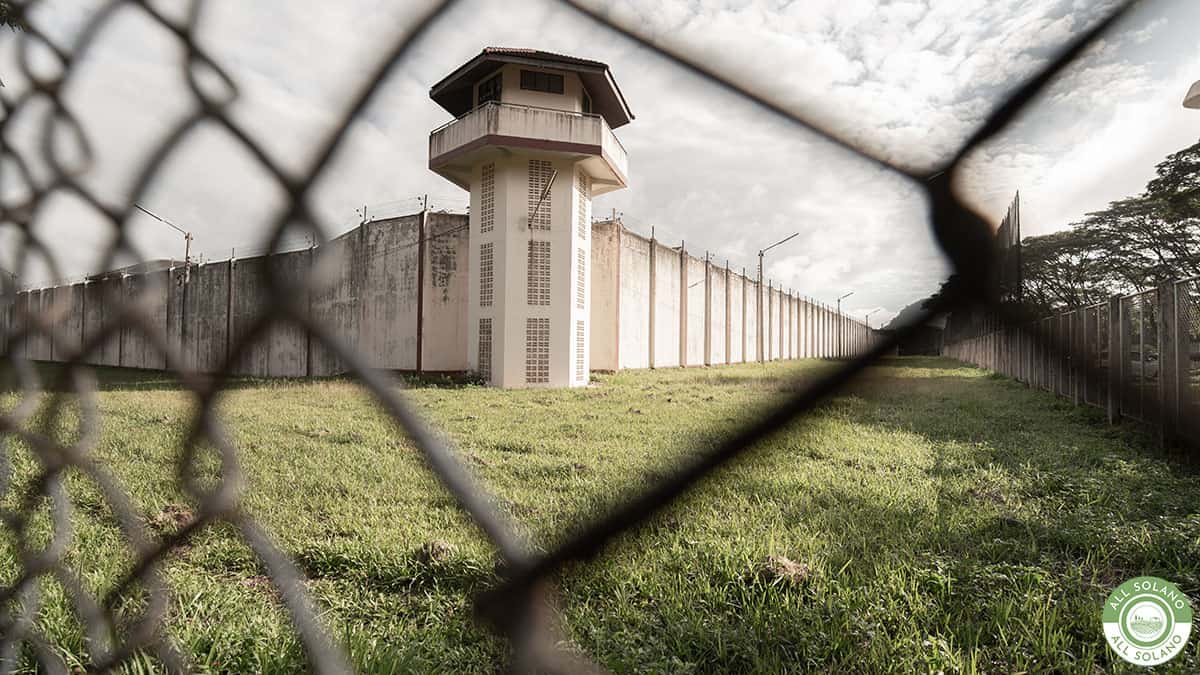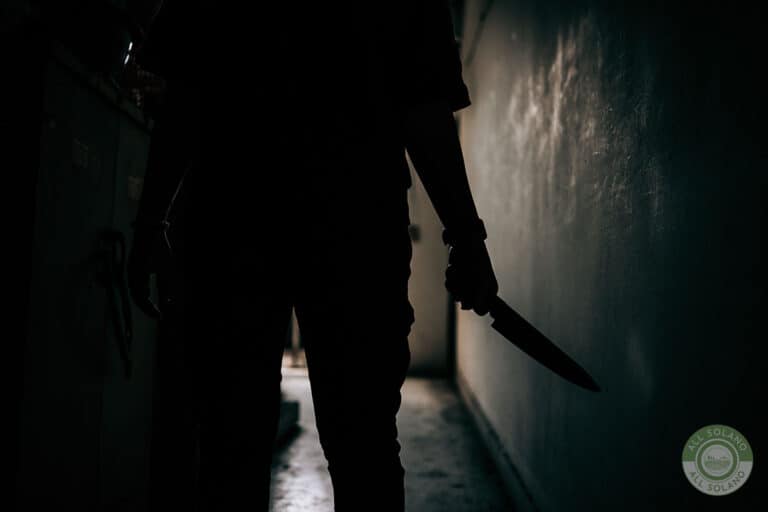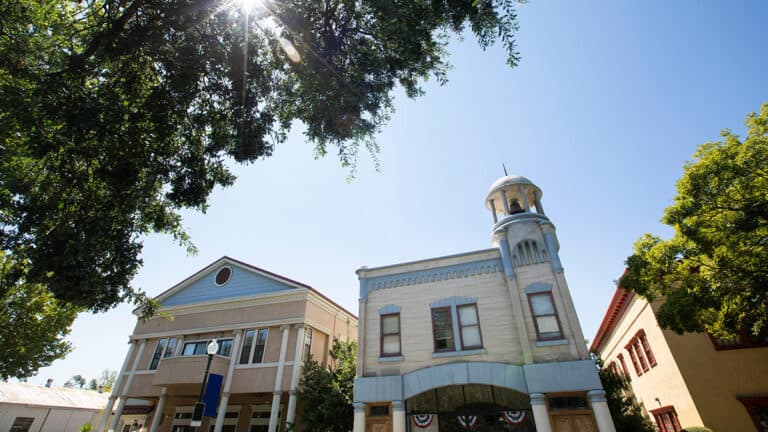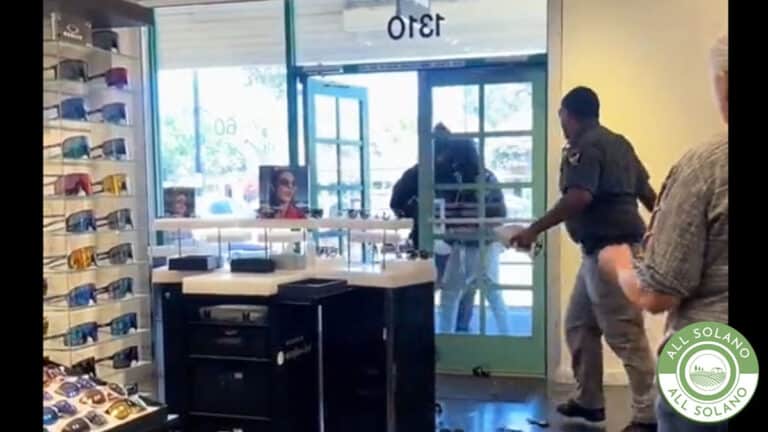Remember These Prison Escapes at CMF in Vacaville?
The California Medical Facility (CMF) is a state prison located in Vacaville, California. The facility opened in 1955 and has housed a number of notorious inmates, including Charles Manson, Ed Kemper, and Huey Newton. The Vacaville prison was featured in the popular Netflix series, “Mindhunter,” a show inspired by true events involving FBI agents tasked with developing the first criminal profiles of serial killers.
CMF features the largest hospital facility of all California prisons. With a population of around 2,500 inmates, prisoners at CMF are categorized into different security levels depending on the nature of their offense(s). Some offenders are entrusted with minimum-security work assignments. It’s proven easier for inmates on work detail to sneak away from their jobs, while escapes from within the prison walls are practically unheard of, with one notable exception.
David Wayne Anderson – 1997
The award for the most-cunning escape from CMF goes to David Wayne Anderson. While Anderson’s escape took some guile, the convict’s time spent on the lam was less cunning.
Back in 1997, Anderson was serving time at Vacaville’s CMF prison for second-degree murder. The 36-year-old inmate was housed in the prison’s AIDS treatment unit, where the inmate managed to put a dummy in his bed, saw through the bars of his third-story prison cell, lower himself to the ground using bed sheets tied together, sneak past a watch tower completely undetected, and then cut through the prison’s wire perimeter fence.
Anderson then abducted a delivery driver from Dixon, California, forcing the hostage to drive the felon to San Francisco. Anderson left his captive bound with duct tape in a hotel room and headed south.
The fugitive stopped in Santa Clarita, California, where he mailed a taunting letter to his former prison guards back at CMF. In the letter, Anderson boasts about his newfound freedom, apparently spent visiting sunny beaches and California amusement parks. The escaped convict also called a family member in Ohio to inform him of his escape.
Not long after, Anderson, armed with a shotgun, attempted a robbery at the iconic Rudford’s Restaurant on El Cajon Boulevard in San Diego. When Anderson pointed a gun at a waitress and demanded money from the register, the frightened waitress ran to a nearby phone and dialed police.
Anderson looked for another waitress to open the register, giving police enough time to arrive on scene and promptly take Anderson into custody. The fugitive was suspected of involvement in other burglaries and carjackings during his escape. But after three weeks, the nationwide manhunt for Wayne Anderson had come to an end.

Failed Attempt – 1973
Not every inmate who tries to escape from CMF makes it out alive. In 1973, Walter Eugene Griner was shot by a CMF prison guard as he attempted to scale a 15-foot fence atop with barbed wire. Griner had somehow managed to escape the high-security area of the prison and already climbed another 15-foot fence in the prison’s interior.
A guard warned Griner to stop climbing the exterior fence but when Griner failed to comply, the guard shot Griner in the leg. After a couple hours on the operating table, the injured felon was pronounced dead.
Thero Wheeler – 1973
That same year, Thero Wheeler successfully escaped from the Vacaville prison. Wheeler’s escape may not have been the Alcatraz-style prisonbreak David Anderson would manage to pull off some 24 years later. But the crimes Wheeler was accused of committing after his escape from CMF made headlines all around the world.
Wheeler was serving time for battery of a police officer when he managed to slip away from a work detail with the aid of some “well-connected” friends, as Wheeler later recalled. These friends were believed to have been allies of the Symbionese Liberation Army (S.L.A.), a far-left militant group that sprang out of the Black Cultural Association gang, then active in Vacaville’s CMF prison.
Learn more about the S.L.A. and infamous crimes committed in Vacaville.
After members of the S.L.A. murdered an Oakland school superintendent, infamously kidnapped publishing heiress Patty Hearst and carried out a string of brazen bank robberies, the FBI added Wheeler’s name to the bureau’s Most Wanted List. And when six S.L.A. members were later killed in a fiery shootout with officers from the Los Angeles Police Department, Wheeler was initially believed to be among the dead.
But Wheeler didn’t die in the shootout and was never involved in those S.L.A. crimes. The fugitive left his S.L.A comrades shortly after his escape from CMF, and he took up a new identity some two-thousand miles away in Houston, Texas.
Wheeler’s cover was ultimately blown when he entered a Houston hospital seeking treatment for a gunshot wound. Wheeler provided a known alias to the medical staff, who alerted law enforcement to his presence. Cops soon had Wheeler back in custody. Two years after his escape, Wheeler was again behind bars to serve out the remainder of his prison term, plus some additional time for the escape.
Tom Soule – 1964
On September 12, 1964, an intense manhunt in Vacaville was underway for 37-year-old Tom Soule, a prisoner at CMF who managed to escape that morning. Soule was serving time at the prison for charges of burglary.
The inmate took advantage of an opportunity that presented itself when Soule suddenly found himself outside the prison’s confines. Soule was assigned to work at the prison nursery, somewhat removed from the main facilities. With apparently too few eyes watching over, Soule seized the moment and slipped away.
Personnel from the California Highway Patrol joined local law enforcement and conducted a massive search of the area that day. The team scoured the hills surrounding Vacaville for any signs of the man’s whereabouts, but to no avail.
Officials at CMF told residents that prisoners will often hide out in the local area for two-to-three days before trying to get further away. Not very reassuring! Police also said the fugitive was last seen wearing denim prison trousers and that reports of stolen automobiles were being watched closely.
Then, the following morning, something strange happened. A hunter in nearby Fairfield told Sheriff deputies he witnessed a man driving a truck erratically down a road leading away from a rock quarry. The driver jackknifed the truck on an embankment, jumped out of the vehicle, and then retrieved a large box from the bed of the truck.
The witness saw the man take off over a hill. When deputies checked the abandoned truck, they discovered a pair of denim trousers, matching those worn by Soule. They had gotten close to the man they’d been looking for, but the trail went cold.
It’s not yet clear when or if Soule was apprehended. A request for records has been submitted to the California Department of Corrections and Rehabilitation.
Jerry D. Sigman – 2006
Jerry D. Sigman, a CMF inmate serving time for second-degree robbery, walked away from his work detail at Napa State Hospital in 2006. Later the same day, Sigman entered a bank with a handgun, stole a car and took police on a high-speed chase before jumping into a canal. The fugitive was taken into custody in Stockton, California.
“The Ranch”
A minimum-security unit called “The Ranch” is located toward the rear of CMF. Here, lower-level offenders appear to have a much easier time getting away. Maybe a little too easy.
Jarvis Brown was a 29-year-old serving time at “The Ranch” for charges relating to evading a police officer and reckless driving. In October of 2016, Brown decided “The Ranch” wasn’t really for him and chose to skip town. The inmate reportedly walked right out of the institution. But he didn’t stay gone for long. Brown was apprehended a few days later in Richmond, California.
A pair of minimum-security inmates also “walked away” from “The Ranch” in 2008. Juan Lopez and Gonzalo Ortega weren’t present for their 9:25 p.m. bed check. The two men had been serving time for various convictions, including possession of controlled substances and conspiracy to a commit crime with a firearm. Ortega had reportedly been selling drugs out of a Little Caesars. Where the pair walked to after leaving the facility isn’t clear. Updates on the search were slim. AllSolano has requested information about the case from the California Department of Corrections and Rehabilitation.
Living Near CMF
When the state authorized construction of CMF in 1944, a site was chosen that laid just south of the Vacaville city limits of the time. Some 700-acres of orchard fields owned by Frank Buck and Frederick Chandler became the sprawling premises of the new state prison. As Vacaville’s population swelled over the coming decades, housing developments drew residents closer and closer to the prison walls. Today, thousands of homes surround CMF on the north and east sides.
Local residents who lived through some of the escapes over the years can certainly recognize the meaning behind a triple horn blast blaring in the distance. The sound means an inmate is on the loose. The three blasts repeat every 15 minutes for the first hour a prisoner goes missing. Notification systems exist now to notify residents when an inmate escapes. These warning systems were developed in response to the inmates who managed to escape from CMF over the years and the feedback from concerned and sometimes angry residents.






